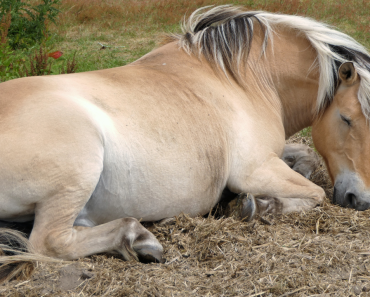Winter is a difficult season for equestrians: it’s dark, chilly, and the inside is crowded; while the outside environment is wet and muddy or entirely frozen.
Horses are more prone to get injured during the winter season when they are more susceptible.
Here are some suggestions for keeping your horse happy, healthy, and safe during the winter months. The proper warm-up, appropriate maintenance, and what you feed all have an impact on your horse in the winter.
You’ll also discover how to keep your horse interested throughout the winter season.
Why Is the Warm-up So Crucial?
Warm up the horse carefully to avoid injuries. When the weather is chilly, tendon and ligament problems are more likely. It’s frequently caused by insufficient warm-ups as well as the horse’s uncontrolled movement. (horses are generally fresher when it’s cold; they want to buck).
The ground is also a concern, as the paddocks and fields are often deep or muddy or even frozen. This increases the likelihood of your horse slipping or walking on uneven ground, which can cause hoof issues.
To sum up, here are three things to bear in mind:
Level your surfaces: If you don’t want the ground to become hard and uneven as the weather gets colder, it’s a good idea to level it before the frosts arrive. The ground will freeze uniformly, which is much safer for horse legs.
Take your time outside: Horses need to warm up in the winter, especially if they’ve been standing in the box for a lengthy period of time. Putting the horse on a walker, on a treadmill, or simply walking him in hand before riding or turning out can help prevent injuries.
Warm-up before riding to improve suppleness and flexibility: Before riding, your riding seat as well as your general suppleness and flexibility will benefit greatly. You’ll be able to follow your horse’s movements more easily and ride more fluidly. Walking with your horse in hand for 10-15 minutes is a fantastic method to prepare both of you for the training session!
If you want to go a step further, a tiny warm-up training session is recommended. All activities may be completed at the stables for just 15 minutes.
What Is the Minimum Amount of Walking Required?
It is well-known that movement is critical. But, in winter, how much movement is required? The working phase, of course, lasts less time, but the quantity of walking done is crucial. Those who keep their horses in stables with free access to paddocks or live outdoors can do less than those who keep their horses in stables with restricted access to paddocks. Another guideline: before requesting your horse to trot or canter, give it 15 minutes of exercise.
What Is the Best Way to Diversify Your Training in an Indoor Setting?
Even the most laid-back of horses may become irritable after riding around and around in a barn all winter. Using ground poles and cabalettas to train might help you keep things interesting. You may use them to develop a variety of different configurations depending on your skill level and goals. Ingrid Klimke demonstrates how to integrate cabalettas training into your regular routine, regardless of discipline or skill level, in this training session.
Walking over cabalettas during the warm-up is also a great way to loosen your horse’s back and warm up his muscles.
Keep in mind that hacking, if the terrain permits, or can trotting or galloping outside are excellent ways to keep your horse interested while training.

